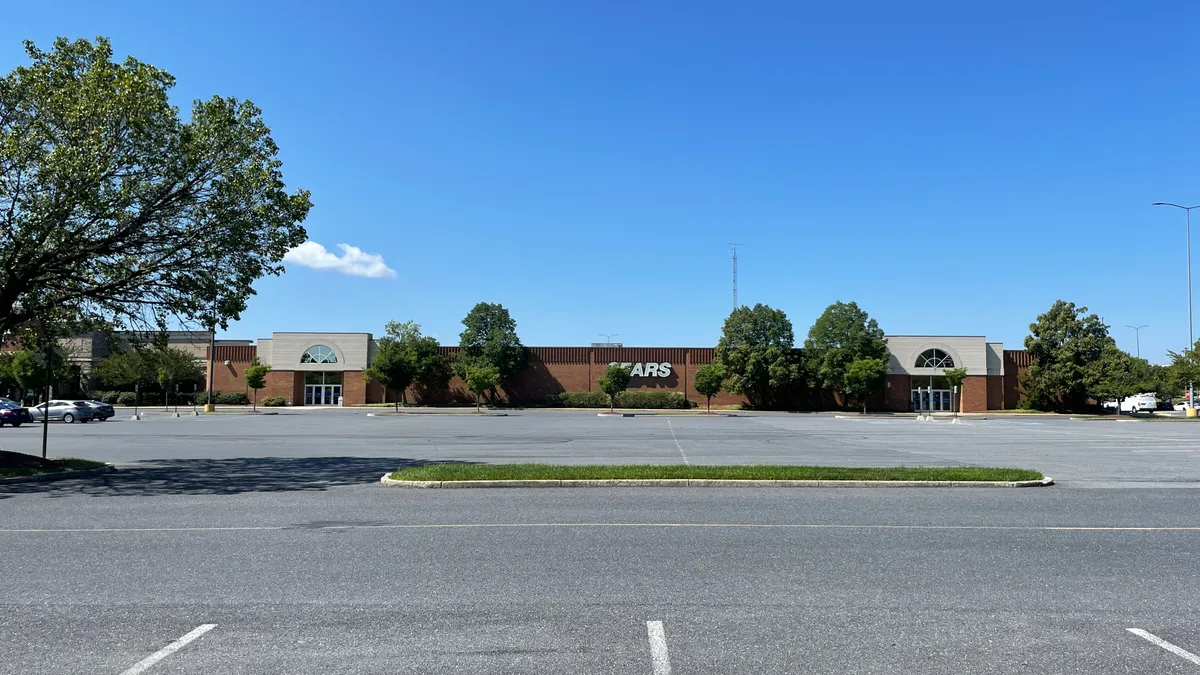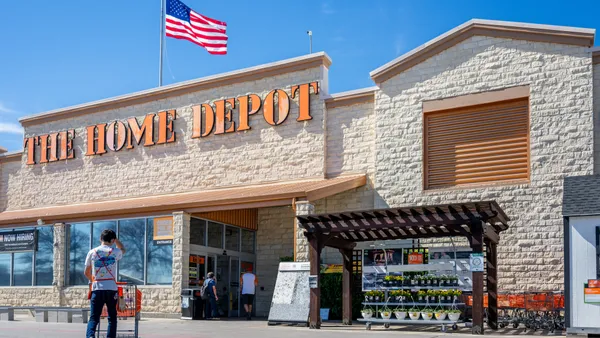Let’s say you’ve been tasked with explaining what a traditional shopping mall is to someone from the distant past, or distant future, who has stumbled into our timeline. The Francis Scott Key Mall in Frederick, Maryland, could serve as good of an example as any to bring them up to speed.
It’s not a big mall (755,000 square feet), at least not compared to American Dream or King of Prussia. It’s not a flashy mall. It opened originally in 1978 and rests just off the interstate in a small crossroads city near Washington, D.C., and Baltimore. It’s anchored by those once dominant middle-market department stores: Sears, J.C. Penney and Macy’s. Go inside it, and you could be anywhere in the country.
In other words, it’s the same as hundreds of malls built in the heyday of enclosed shopping centers and the American suburb. The reason I came to this one is that it houses the last full-line Sears department store for hundreds of miles in any direction.
Fifteen years ago, there were nearly a thousand Sears department stores in the U.S. Now there are just a handful. Why that is has been well-documented — the short version is that the disappearance of Sears stores from the U.S. has followed a never-ending cycle of financialization and retail decline.
The mystery today is of those that are still around, how are they doing and why do they still exist? With so many hundreds of closures in the U.S. over recent years, how do you explain those Sears and Kmarts still with us? And how long will they remain a part of the retail landscape?
Walking around the Sears in Frederick, the answers aren’t apparent. The store is thin on merchandise. What goods the store has are spread out on as many shelves as possible, and still there are entire patches of empty shelving in the corners and large swaths of sales floor without any fixtures or racks.
The store in Frederick was even more sparse when it came to foot traffic, though to be fair I visited in the first couple hours after opening on a Thursday. Across different times during my visit to the mall, I saw perhaps two or three customers in all.
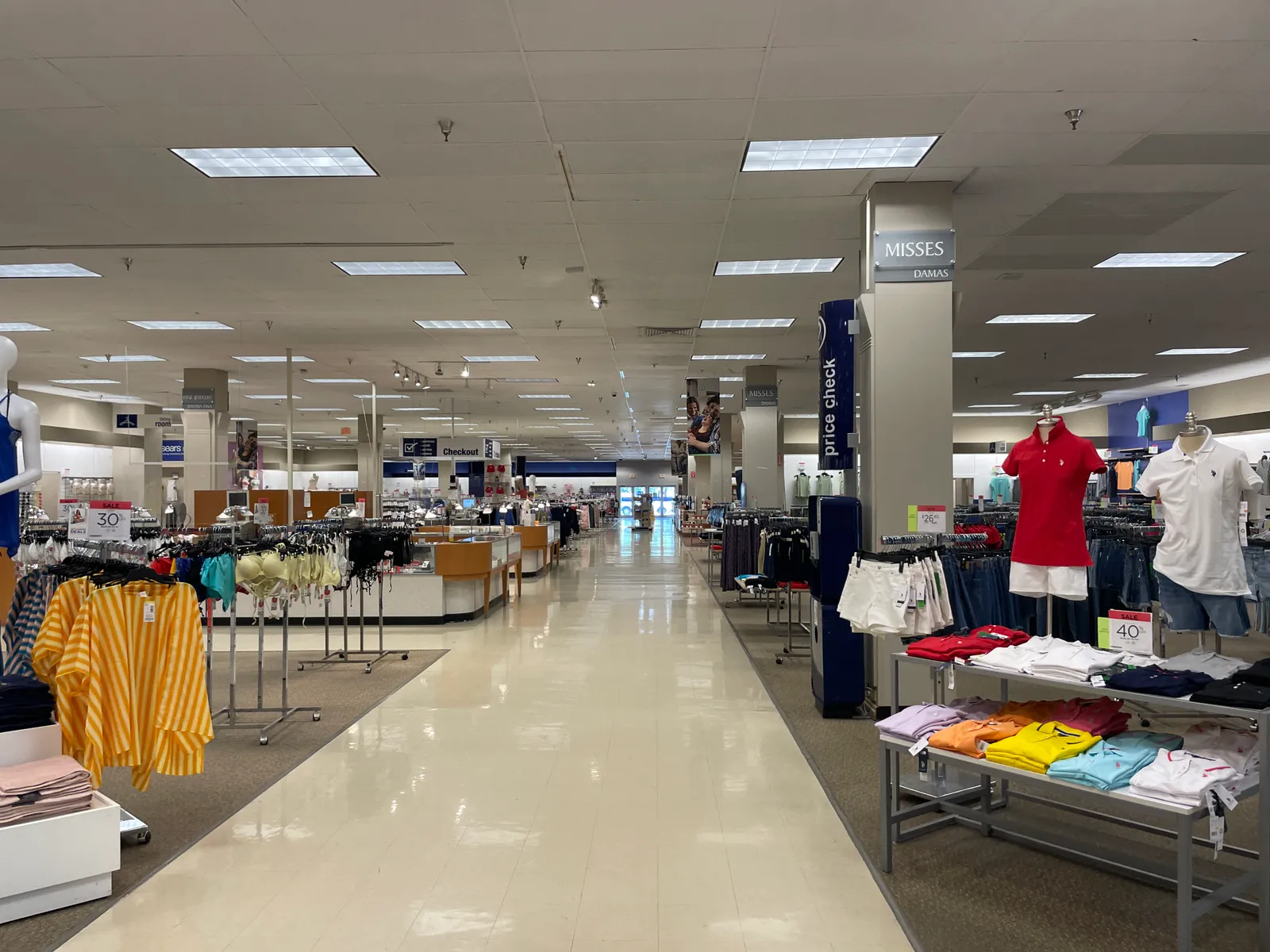
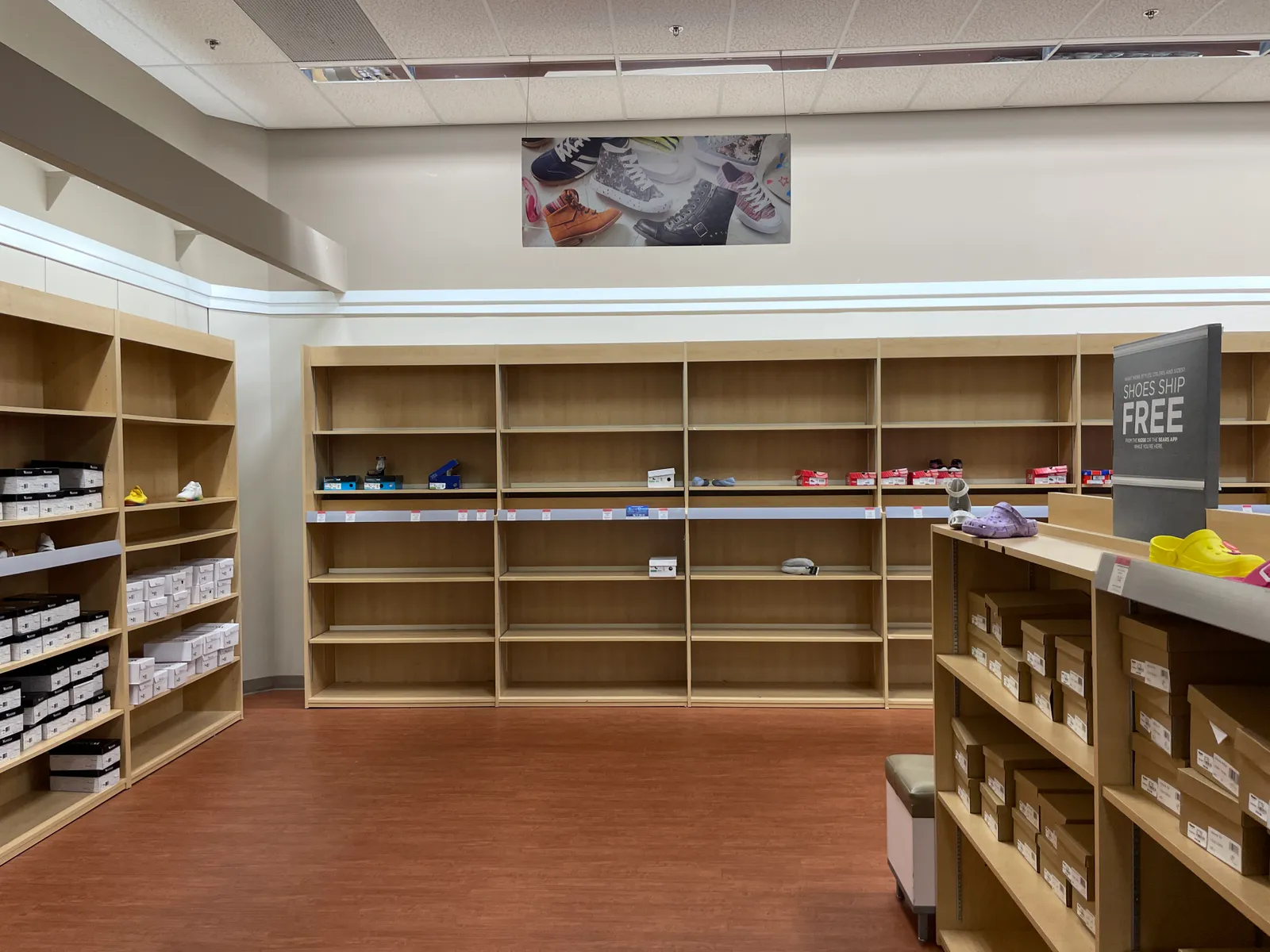
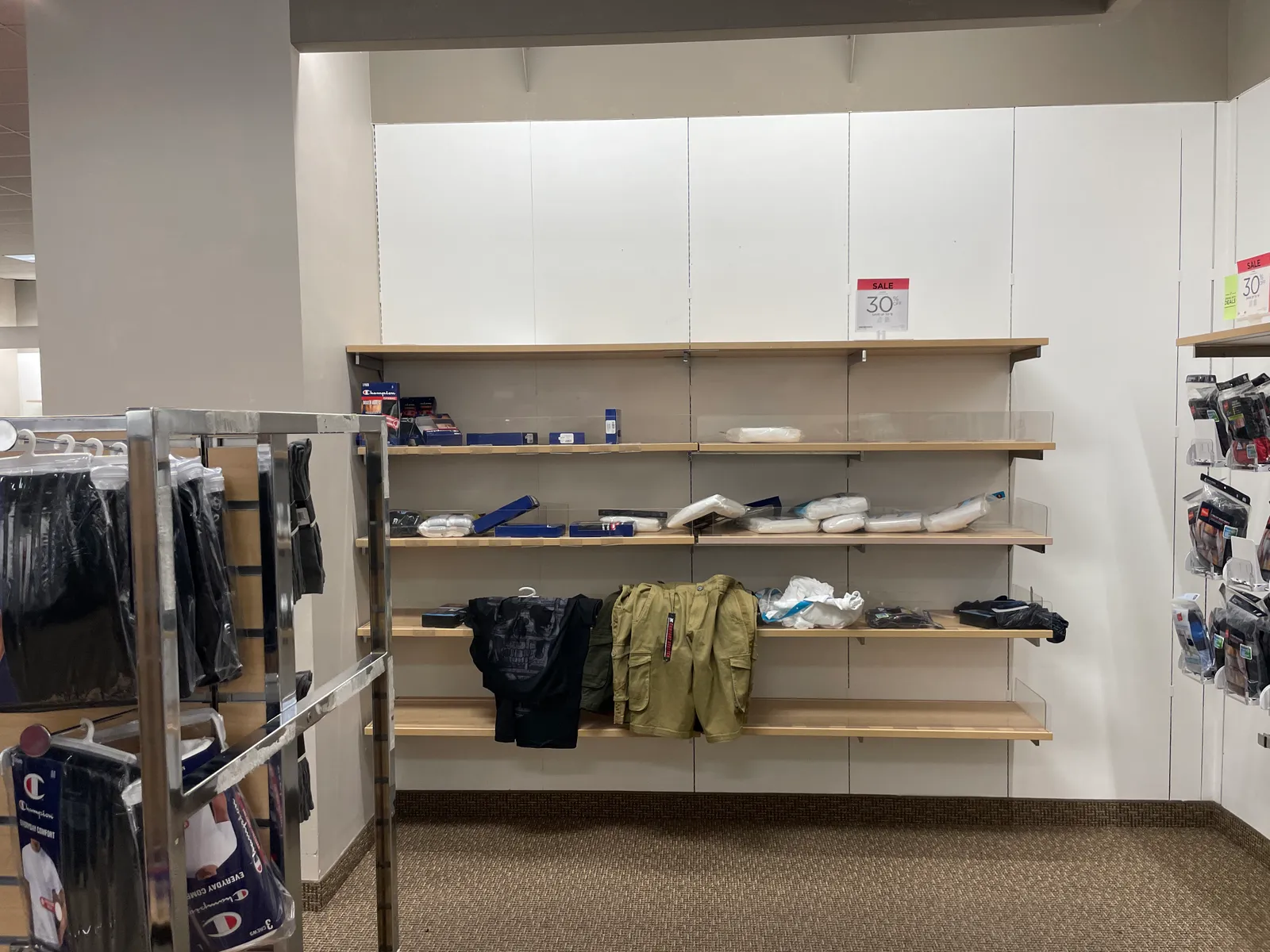
When Nick Egelanian, president of retail real estate services firm SiteWorks, met me outside the Sears, he seemed flabbergasted that the store was still operating. Seeking answers, he chatted up an employee, who didn’t have any more idea than we did on how or why this store has stayed open.
Transformco — Sears’ parent company, which is controlled by former Sears Holdings CEO Eddie Lampert — did not respond to my request to learn more about why it’s kept the store open and how the store is doing.
Nothing about the store diminished our curiosity and, frankly, bafflement, though Egelanian had some theories (more on that below). Based on merchandising alone, the Sears looks very different from any other store I saw in the mall.
“This is a real operating Sears,” Egelanian said. “It’s a middle market. There’s a ton of middle markets. It’s a middle market that’s got plenty of competition. It’s attached to bigger markets where [Sears] isn’t operating. Why would you keep this one? It’s not doing business. It’s sparsely merchandised. Why would you run this? … I am just shocked to see this one open.”
Sears, malls, mortgages, vultures
I’ve driven by the Frederick Sears many dozens of times on trips from our home in the suburbs of Washington, D.C., to that of family who live in Gettysburg, Pennsylvania.
The Sears’ giant facade stands out from I-270 as it directly faces the passing cars — 110,000 of them per day, according to the mall’s owner, PREIT. I’ve never ventured into Sears or the mall before because, well, I don’t shop (except for books) unless I absolutely have to.
(Random disclosure: The last time I was in a store owned by Transformco was a Kmart in New York, while I was staying in the city for a work trip. The Kmart was across the street from my hotel near Penn Station, and I needed an emergency pair of earplugs to sleep through the Manhattan traffic outside my window. I also bought a pair of unstylish athletic shorts to sleep in. The store closed permanently less than a year later.)
I visit Frederick semi-regularly, but the mall is not a draw for many outsiders, and perhaps not very many residents either. You go to Frederick to visit its cool and historic downtown — with its 18th and 19th century buildings, canal, art galleries, restaurants and interesting shops that exist nowhere else in the country.
Downtown is the place to go for those in and around Frederick who want somewhere to hang out and find random cool things to buy. Anyone on a pure commodity-goods shopping binge can head north along I-270 for 14 miles from the mall to reach Simon Properties’ Clarksburg Premium Outlets, host to top brands including Nike, Calvin Klein, Armani and American Eagle.
On a Thursday at noon, the Francis Scott Key Mall was quiet — not empty, but certainly not anything close to abuzz. Egelanian and I observed traffic through the mall, much of it in and around the food court where we talked about the history and financial lives of malls for an hour. The stores themselves carried little traffic, except for some marquee stores that are likely draws in and of themselves, namely Barnes & Noble and Dick’s.
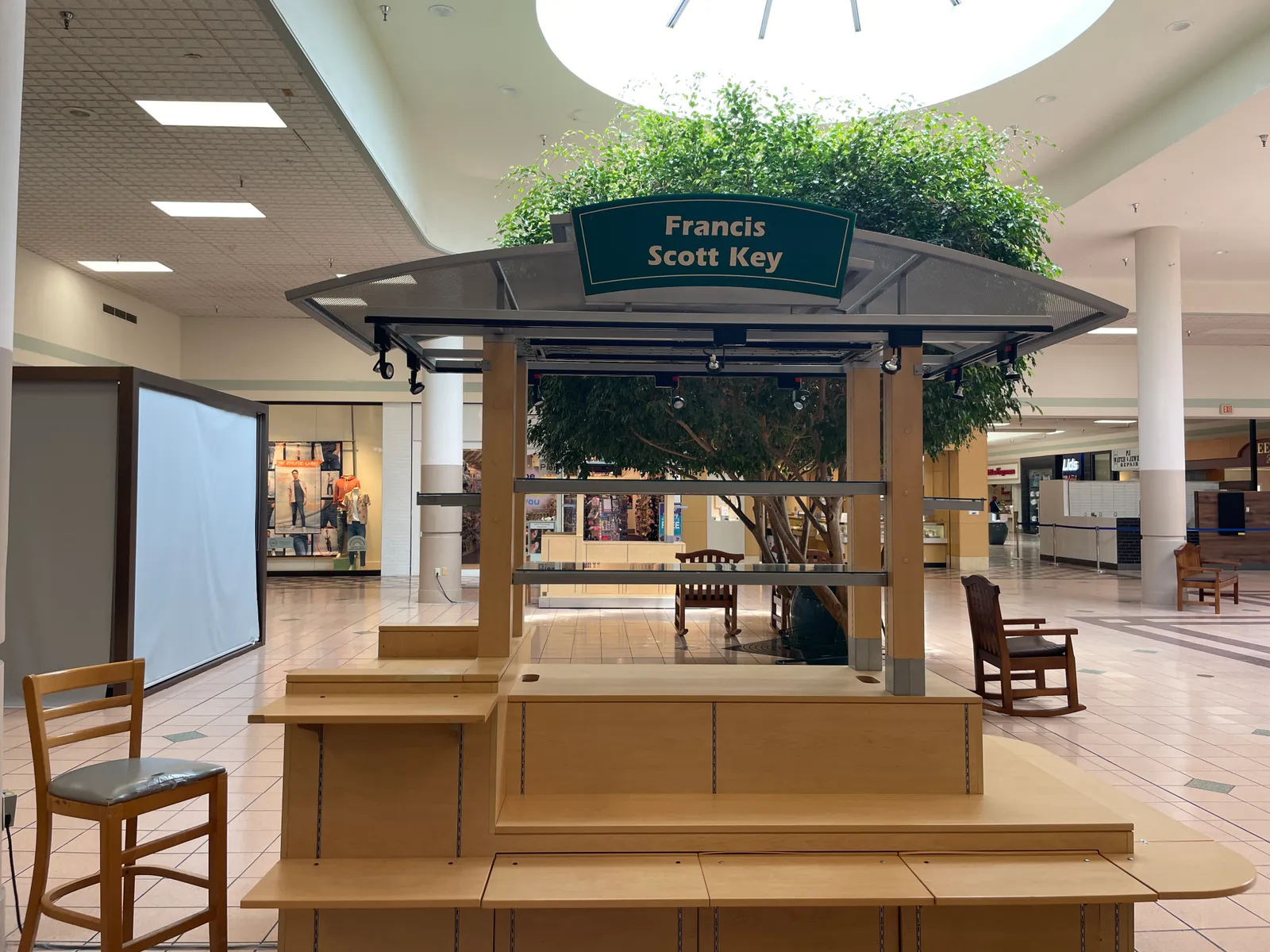
Here are some notes I made on a walk through the mall at 1 p.m.: “Yankee Candle: Empty,” “Torrid: Empty,” “Bleacher Bums: One family,” “American Eagle: 2-3 customers,” “Hallmark: Empty,” “Lane Bryant: 50% off clearance, store empty,” “Salon: empty,” “Sears: One customer (middle-aged man, no items [in hand]).”
Of course, that’s just one day and not prime traffic time for a mall, but other data shows a relatively quiet life for the Francis Scott Key Mall as well.
According to data shared with me by analytics firm Placer.ai, foot traffic was negative year over year for seven months out of the year in 2019. Through most of the year, the traffic at the Sears in Francis Scott Key underperformed the mall itself. In December 2019, for example, traffic at the mall was down 4.2% while traffic at Sears was down 20.8%, according to Placer.ai.
The year that COVID-19 hit the U.S. was far worse, unsurprisingly given trends around the country. Traffic at the mall fell by at least 25% every month in 2020 beginning in March, and by more than 90% in April and May when the mall was closed temporarily.
Traffic came roaring back in spring 2021, with footfalls up 3,500% and change last April, according to Placer.ai. Rebounds at Sears, in terms of growth rates, were frequently even larger.
Traffic at the mall started out up double digits this year as well, but has been leveling off since March as the major consumer shifts — including the end to stimulus and the spike in gas and food prices — have taken a toll on discretionary spending. Year-over-year growth dropped to 6.9% in May and turned negative in June. For most of the year so far, the Sears growth numbers were weaker.
In emailed comments, Ethan Chernofsky, vice president of marketing at Placer.ai, noted of the mall, “Critically, there are signs that mission-driven shopping could be returning indicating that while visits may be down, the caliber of these visits could be higher and more intent-driven.”
Egelanian noted as much in real time as we observed the mall and its shoppers. “I’m watching people come in, and I can tell you by the cadence of their walk what they’re here for,” he said.
Having just observed a woman, perhaps in her mid- or late-20s, in athleisure wear hurry by with obvious focus, I asked, “If they’re walking faster, then— ”
“They’re going somewhere specific,” Egelanian said, finishing the thought. “But you don’t just see anybody here that’s just hanging out. … It’s not good.”
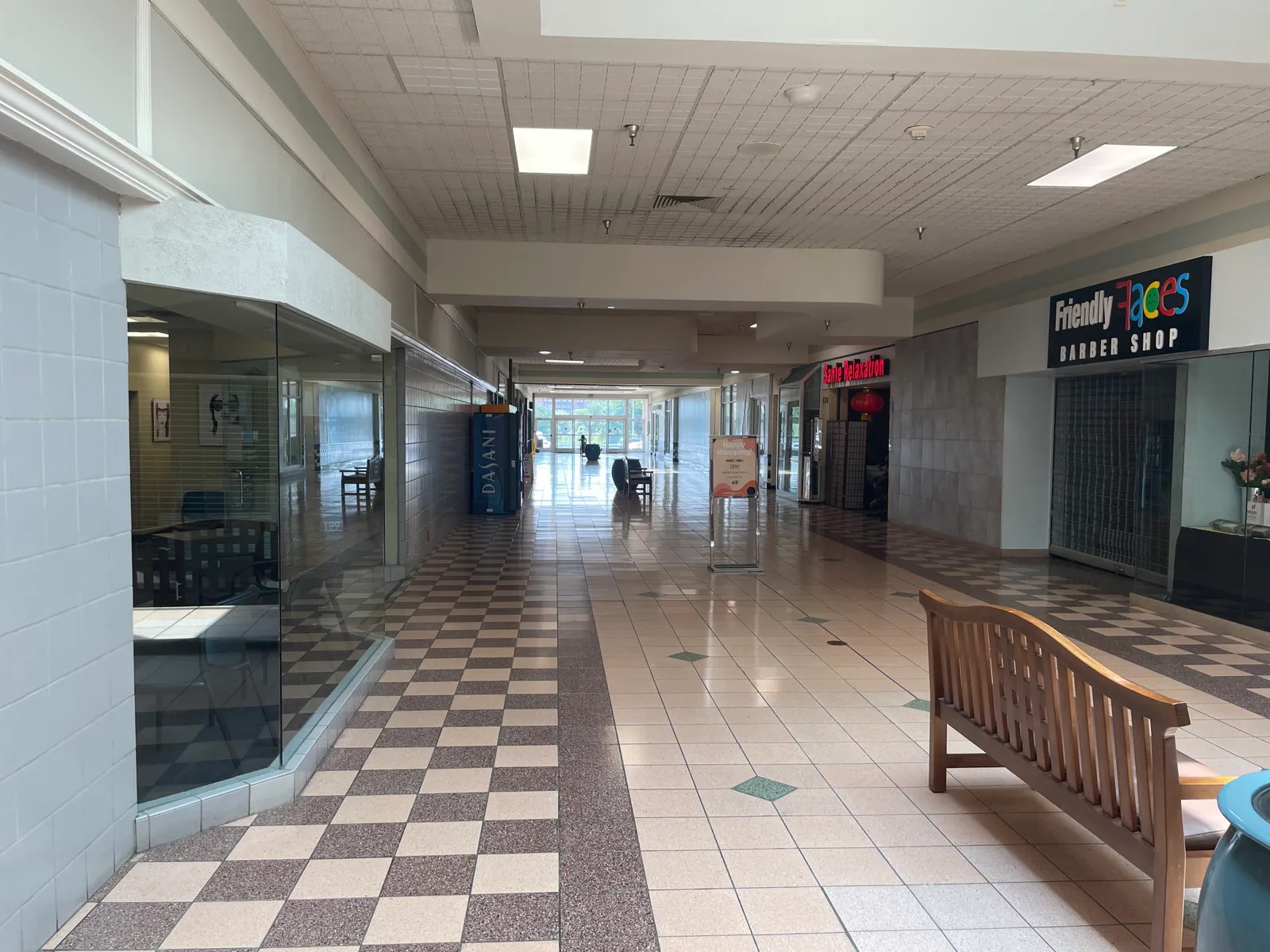
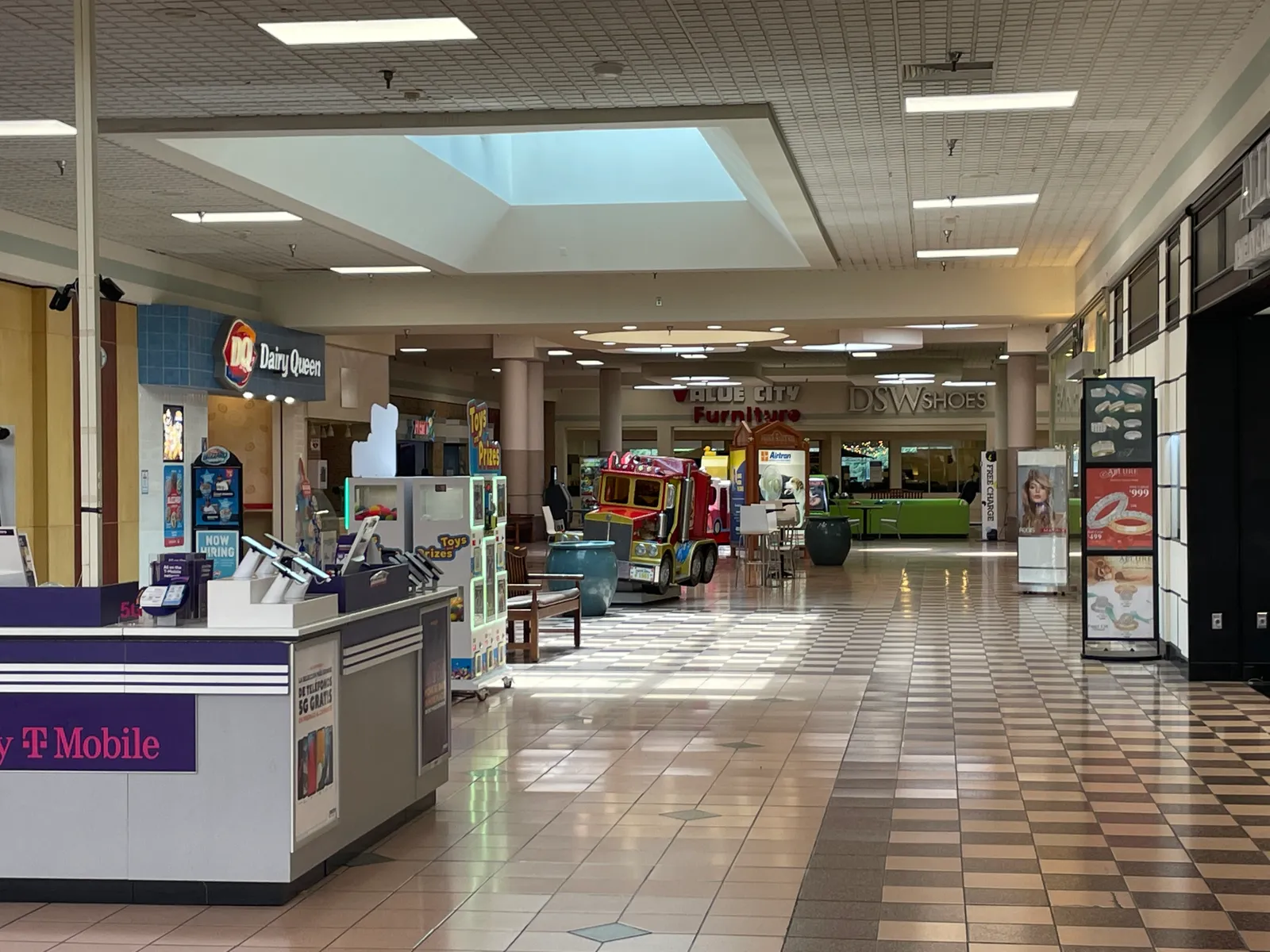
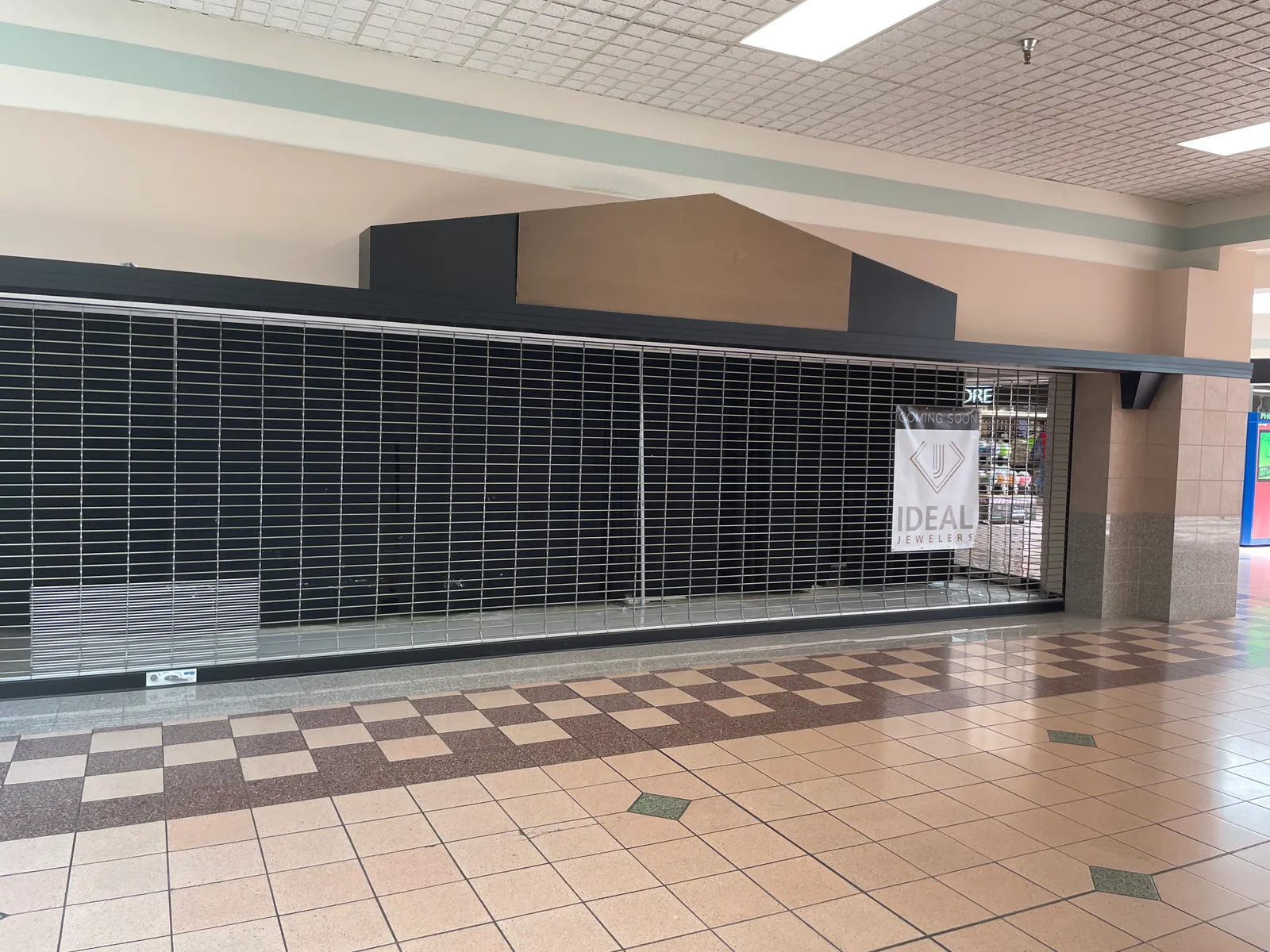
It’s hard to know what the fate of the mall, which has a $60.5 million mortgage coming due in 2024, will be. Very possibly, PREIT could have to renegotiate the loan, which it did already in 2021.
As Egelanian explained, there are several paths for malls that have gone into decline. The malls have complicated ownership structures, and complicated lease structures with their tenants. A lot of the ultimate investment capital comes from the market for commercial mortgage-backed securities, which bundle loans on commercial properties together into bond-like instruments. Holders of commercial mortgage-backed securities products often have interests that are different from those of mall operators and retailers.
Malls that can’t pay their mortgages when they come due or refinance their loans go into default. From there, Egelanian said, the mall could be sold to buyers who aim to manage the decline. They pare back spending on the property to reap whatever yield is left in the difference between costs and rent revenue. Only a few hardy souls are trying to revive B-class malls like this.
Then there are also what Egelanian calls “vultures,” who buy up sections and anchor boxes in the mall for their own purposes, maybe to put in apartments, or maybe hoping to just get paid when a future redevelopment project runs into the finely printed rights in a property deed or lease. “The vultures want these things for their own purposes,” Egelanian said. “They just want to come in and make money from pieces of it. They don’t care about the public. It’s just money.”
Cities like Frederick — that have tax revenue, community history and prime land tied up in regional malls — are often left to react as backroom parties work out the fate of a mall among themselves.
A relic of retail’s past
All of this is to say, there are many contingencies behind the scenes, and the reasons for a mall or mall store being open or closed depends on a lot of unseen factors.
We talk in retail of broad trends shaping malls and the chain stores within, and no doubt they guide events in the aggregate. Just as any given mall has its own reasons for staying open or closing, a store like Sears may stay open or close for any number of reasons beyond foot traffic and sales.
“Why is Sears operating a skeletal store?” Egelanian said. “There’s a reason. It’s not an accident.”
The Sears stores that have closed, as well as the J.C. Penneys and the Macys and all the other department stores that have shuttered over the years, go a long way toward explaining the state of this mall and others like it.
“Malls were built in the 1960s, 70s and 80s, when the [full-line] department stores were the Walmarts of their day. That’s the bottom line,” Egelanian said. “Everybody shopped at department stores. Malls were basically recreating downtowns where you’d have two or three department stores and a bunch of street retail. Well, that model changed. Walmart became Walmart, Target became Target, everything became drive-up. Nobody does their day-to-day shopping in a place where you have to go into an ecosystem.”
Egelanian added later that traveling to an ecosystem like a mall is too inconvenient and costly now for consumers.
When department stores stopped printing money as they had in the early decades of the malls, the malls started to die off.
Sears was once the reason to drive to a mall. It was the everything store. The store in Frederick, on the other hand, was stocked one item deep on shelves, with a majority of the store devoted to apparel along with sections for appliances, exercise machines and Craftsman-branded tools (which Sears no longer owns).
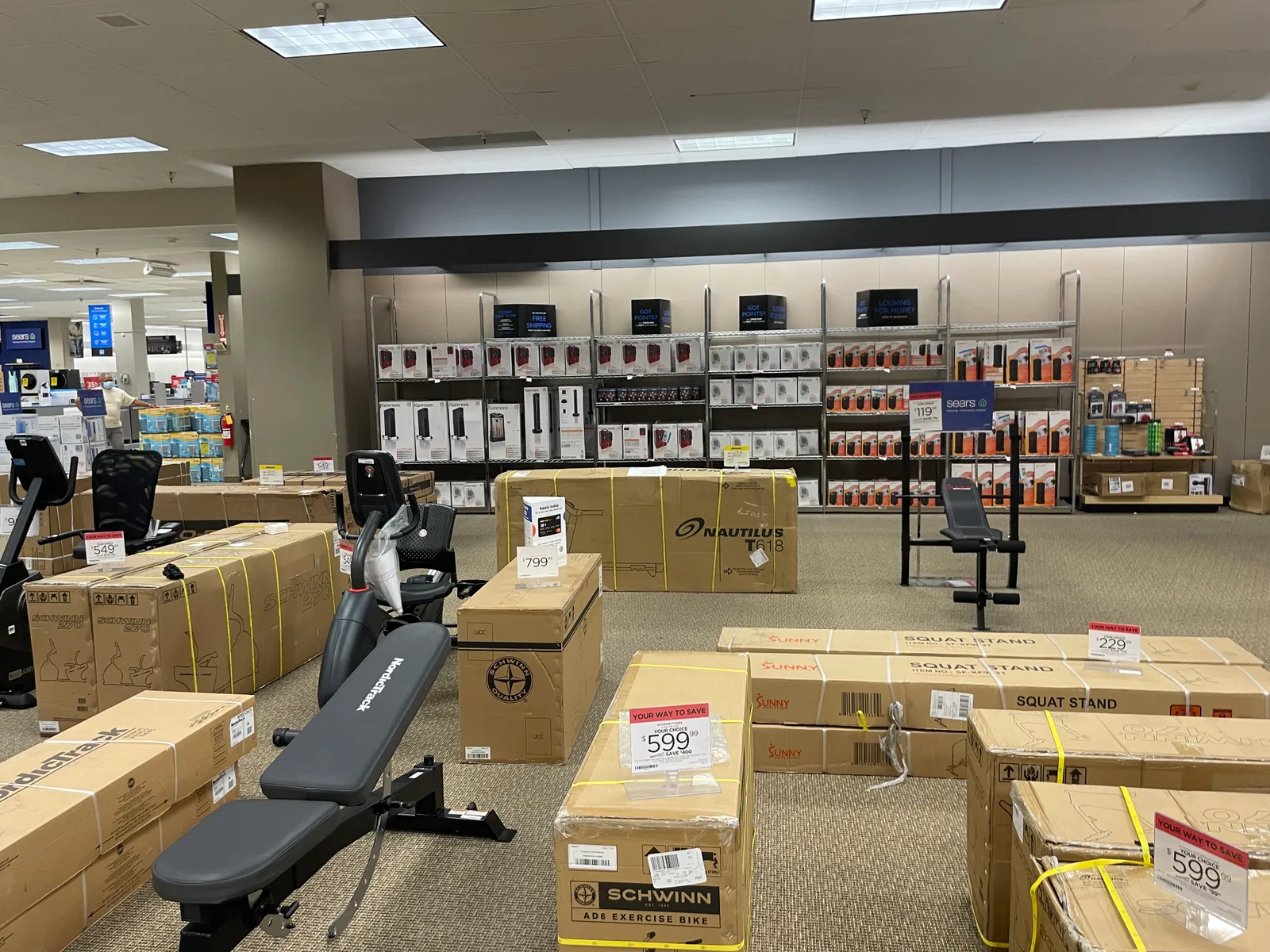
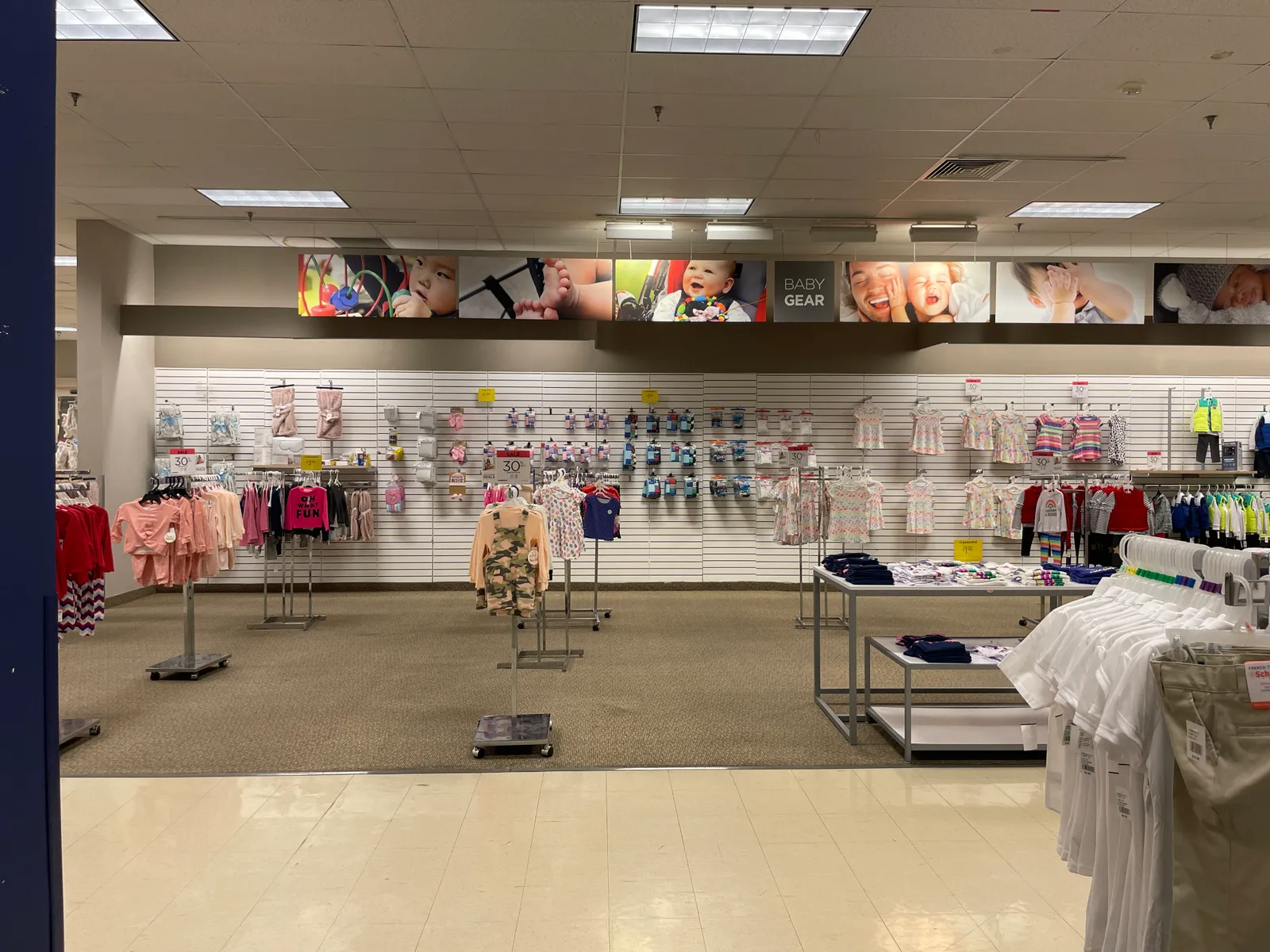
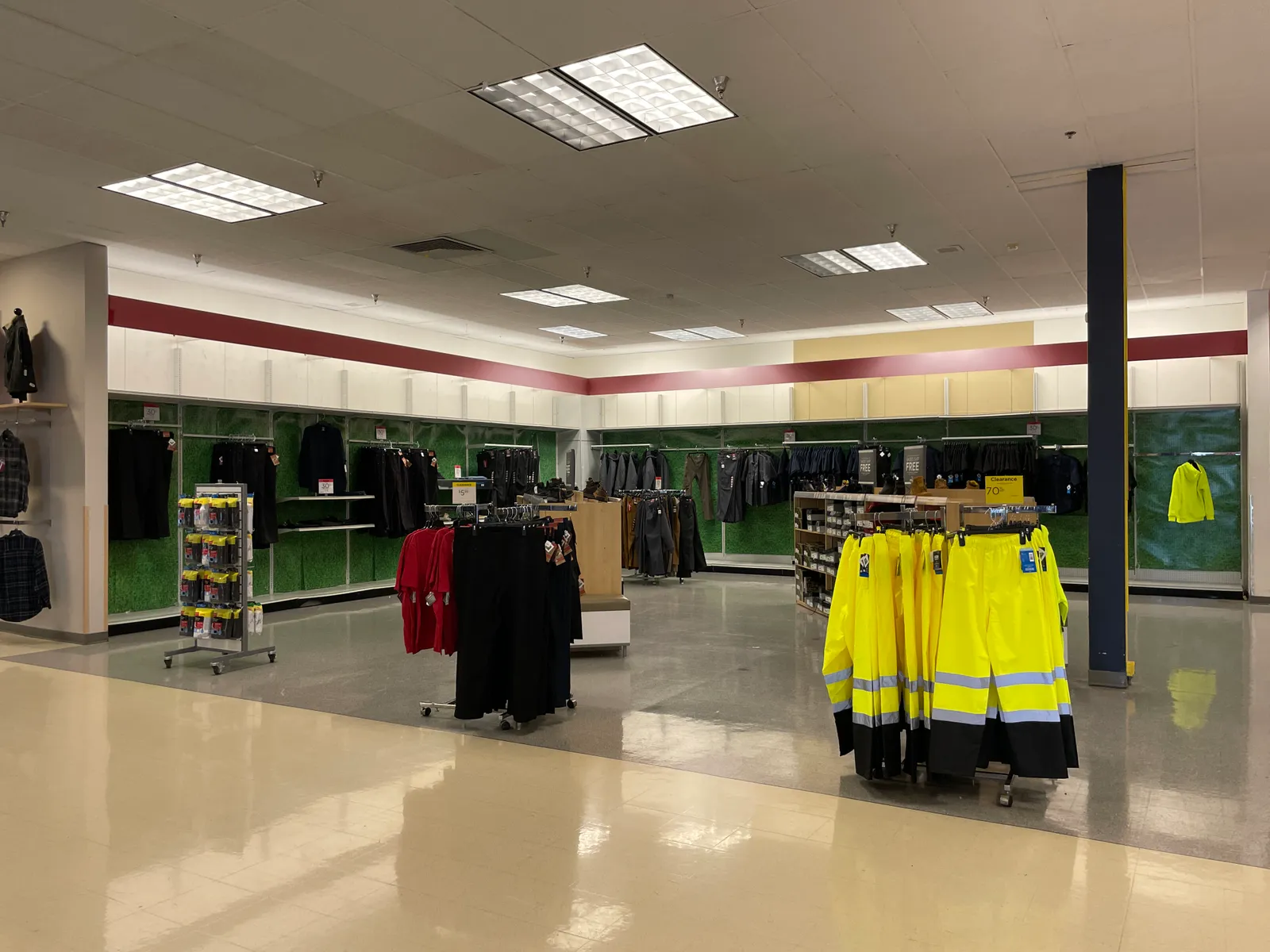
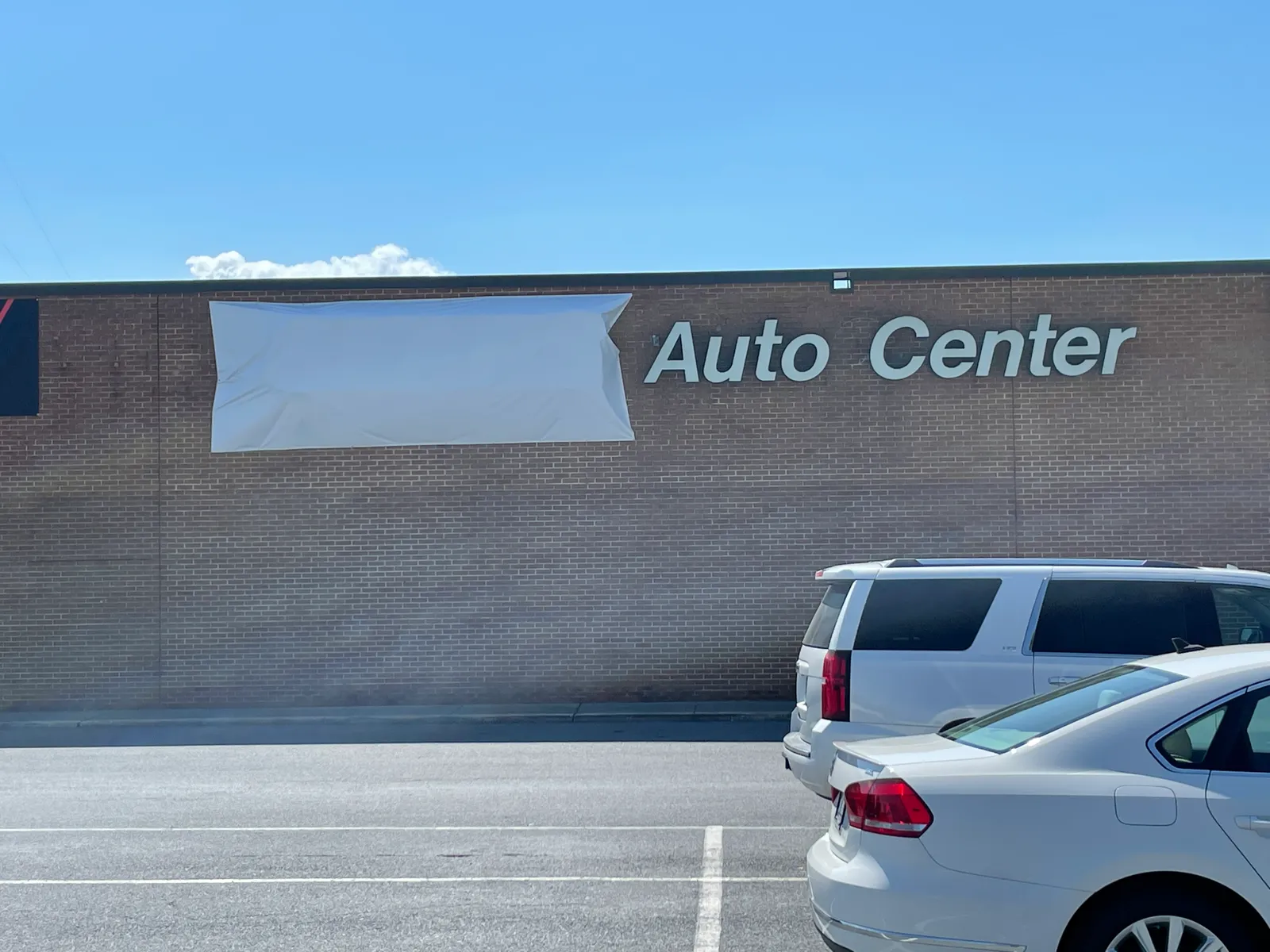
Egelanian contends that the Sears is not a draw, can’t be doing much in sales and likely does not matter to the future of the mall in and of itself.
Egelanian enumerated the reasons the store — the underlying property of which, based on county records, Sears doesn’t appear to own — might be open:
It could still be profitable to operate (“We know that’s not the case.”). It could have some special place in the organization or within Lampert’s heart (“The least likely.”). Or there may be a legal requirement to operate it (“In those cases, [Sears] would have tried to break out of that somehow.”). Or there may be something in the lease that would kick the space back to the mall rather than leave the lease as an asset Sears could sell if it left.
The Sears happens to be the last in PREIT’s portfolio. The company told me in a statement: “Sears historically performed well at FSK as far as Sears stores go. PREIT has been proactive in terminating Sears' occupancy throughout its portfolio: In 2012, PREIT had 27 Sears stores. Through asset sales and proactively recapturing and re-leasing them, FSK is the only operating store in the portfolio.”
Living on the website of Transformco Properties, the real estate arm of Sears' parent, is a lease brochure for the Frederick store that lists the space as "available." It's not clear, though, how actively the space has been marketed or when. It seems at least possible that Sears has tried to exit the store space but hasn't found any takers so far.
PREIT has transitioned former Sears stores into a variety of different spaces, the company noted. At Woodland Mall in Grand Rapids, Michigan, it redeveloped a Sears into a new Von Maur and a wing of small shops. It filled another Sears space in Massachussetts with an Aldi and a Burlington. Another PREIT sold to a university healthcare center for an outpatient medical facility.
I’ve been asking since 2019, after Lampert bought hundreds of remaining Sears and Kmart stores out of bankruptcy and formed Transformco, why bother? Many if not most observers expected Sears to fully liquidate in bankruptcy. Why didn’t it? After a decade of decline and asset sales, what future did Sears and Kmart have?
Since then, Sears and Kmart have continued the slow liquidation under Transformco that went on before and during Sears Holdings’ Chapter 11 (which is still going on). Only Lampert and his inner circle know what the point of it all is, the endgame.
The rest of us are left guessing as we tour the empty, quiet remnants of one of the largest retail empires ever built.



